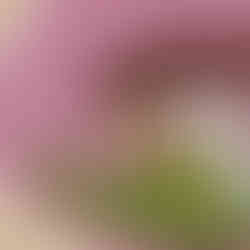7 Essential Embroidery Knots
- Melissa Galbraith
- Mar 7, 2023
- 4 min read
Updated: Jun 11, 2024

Knots are an essential part of hand sewing. They keep your thread in place on the back of your fabric. They're also known for tangling up your thread and causing general frustration. I'm not a fan of those kinds of knots... But when it comes to hand embroidery, knots are also an essential stitch for adding texture, depth, and dimension to the front of your stitch project. They also add decoration, detail, and bring your creative vision to life on the front of your fabric.
As I'm sure you have guessed there are many different kinds of embroidery knots. Many can be made on their own, used to fill in spaces, and some can even be made in a row or chain. Embroidered knots can be tricky and frustrating, however, you're familiar with them, you'll love the added emphasis to your embroidery.
Here are 7 essential hand embroidery knots you should know
French Knot
The French knot is a round, raised knot that can range in size. It's one of the most common embroidery knots and the first knot I learned how to make. By wrapping the thread around the needle more times or using more strands of thread, the French knot can grow in size. Stitchers can also alter the look of the French knot based on their thread tension; a tighter knot will be more rounded, where as a looser knot will be larger and loopier.
Pictured above from R to L: extended design from A Pacific Northwest Spring in How to Embroider Texture and Pattern, Forest Foraging Peel Stick and Stitch patterns, Desert Meadow-Beginner Hand Embroidery Pattern PDF.

Colonial Knot/Figure 8 Knot
The colonial knot or figure 8 knot is almost interchangeable with the French knot. The two look very similar but are made differently. When making a French knot, all of the thread is wrapped in one direction, where as with the colonial knot, the thread is wrapped in a figure 8. I also find that the colonial knot sits higher up off of the fabric because of how the thread is wrapped. Since learning how to make the colonial knot, I have also found that many stitchers are also very particular about which knot they prefer. I'm not picky and like them both.
Pistil Stitch
Admittedly, the pistil stitch is called a stitch and not a knot, but to me, it's a knot. The pistil stitch is basically a French knot with a long tail or straight line attached. I love using it for plants and flowers. Just like the French knot, the more times the thread is wrapped around the needle, the larger the knot of the pistil stitch will be.
Pictured above from R to L: 3D Woodland-Advanced Embroidery Kit, Woodland Mushroom-Advanced Embroidery Kit

Chinese Knot
The Chinese knot looks very similar to the pistil stitch. In my opinion it's the colonial knot's version of the pistil stitch. Like the French and colonial knots, I find the pistil stitch and Chinese knot interchangeable if they're being made as stand along knots. An added benefit of the Chinese knot, is that it can also be made in a line.

Four-Legged Knot
The four-legged knot looks similar to a cross of plus sign with a knot in the center. I've used this stitch for anything from flowers to stars. While not as common (no pun intended) I think this knot is one of the easiest on this list to create.
Bullion Knot
Th bullion knot is a long thin knot. Every time I make this knot I think of a worm. Much like the French knot, keeping the tension even is an important factor when creating the bullion knot. If the thread is wrapped loosely, the knot will be lumpy and loopy. The bullion knot is also a fun way to fill in a space with added texture.
Pictured above from R to L: Forest Foraging pattern from How to Embroidery Texture and Pattern, 3D Woodland-Advanced Embroidery Kit, and Advanced Thread Doodles embroidery workshop sampler by MCreativeJ.
Danish Knot
The Danish knot is a triangular knot. While usually made as a stand alone knot, I've also used this knot to fill in spaces and create nobly texture on gourds. Similar to the four-legged knot, the Danish knot also slides the needle under other threads making loops to create a filled in knot. With the Danish knot, I find it's helpful to keep this knot looser than the other knots mentioned on this list so that it fills in the triangular space more.
Pictured above from R to L: A Pacific Northwest Spring pattern from How to Embroidery Texture and Pattern, Advanced Thread Doodles embroidery workshop sampler by MCreativeJ.
I hope you enjoyed learning about different hand embroidery knots! This is just a sampling of the many embroidery knots you can make. For step by step tutorials of many of these knots and patterns, be sure to check out my book How to Embroider Texture and Pattern!























Comments